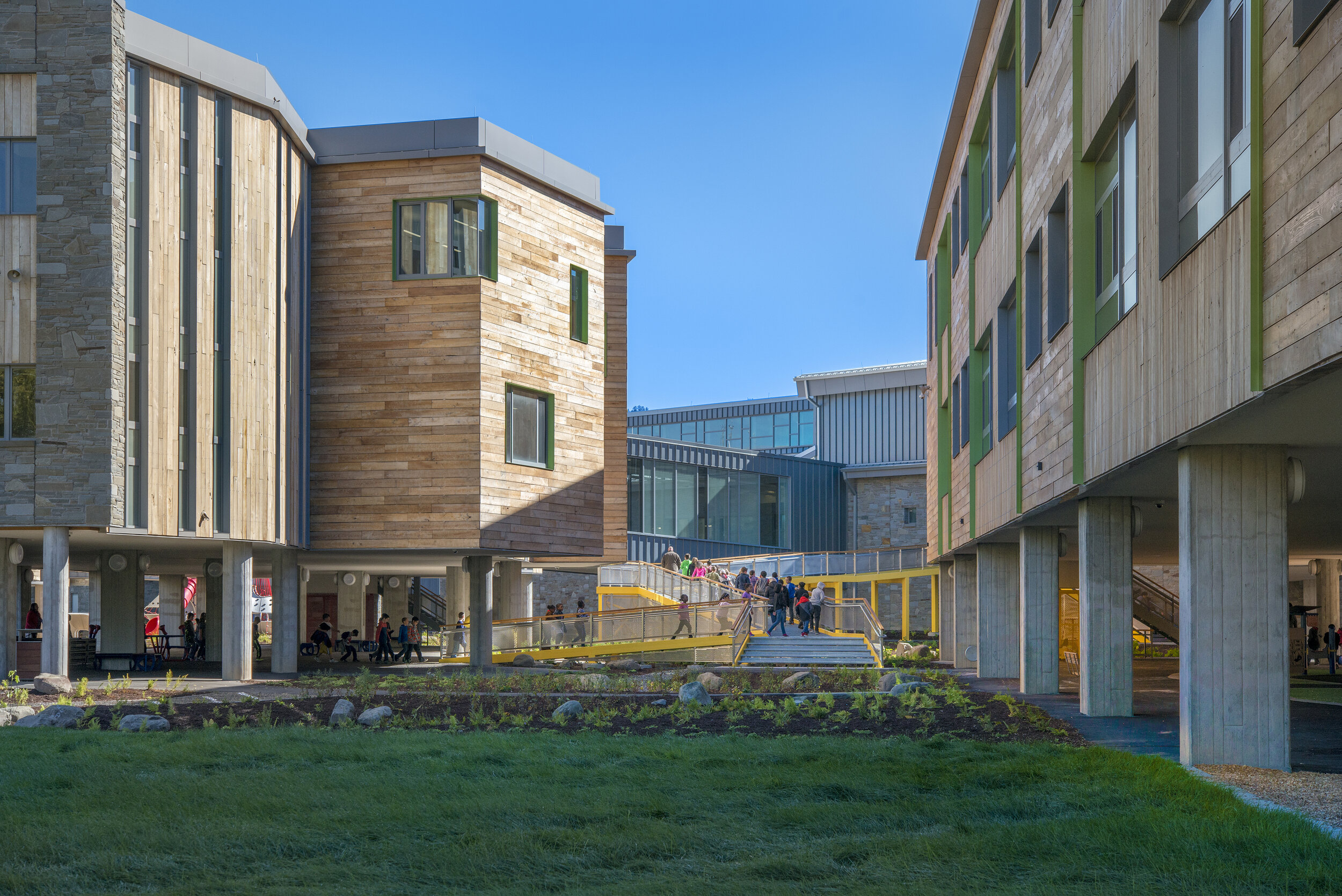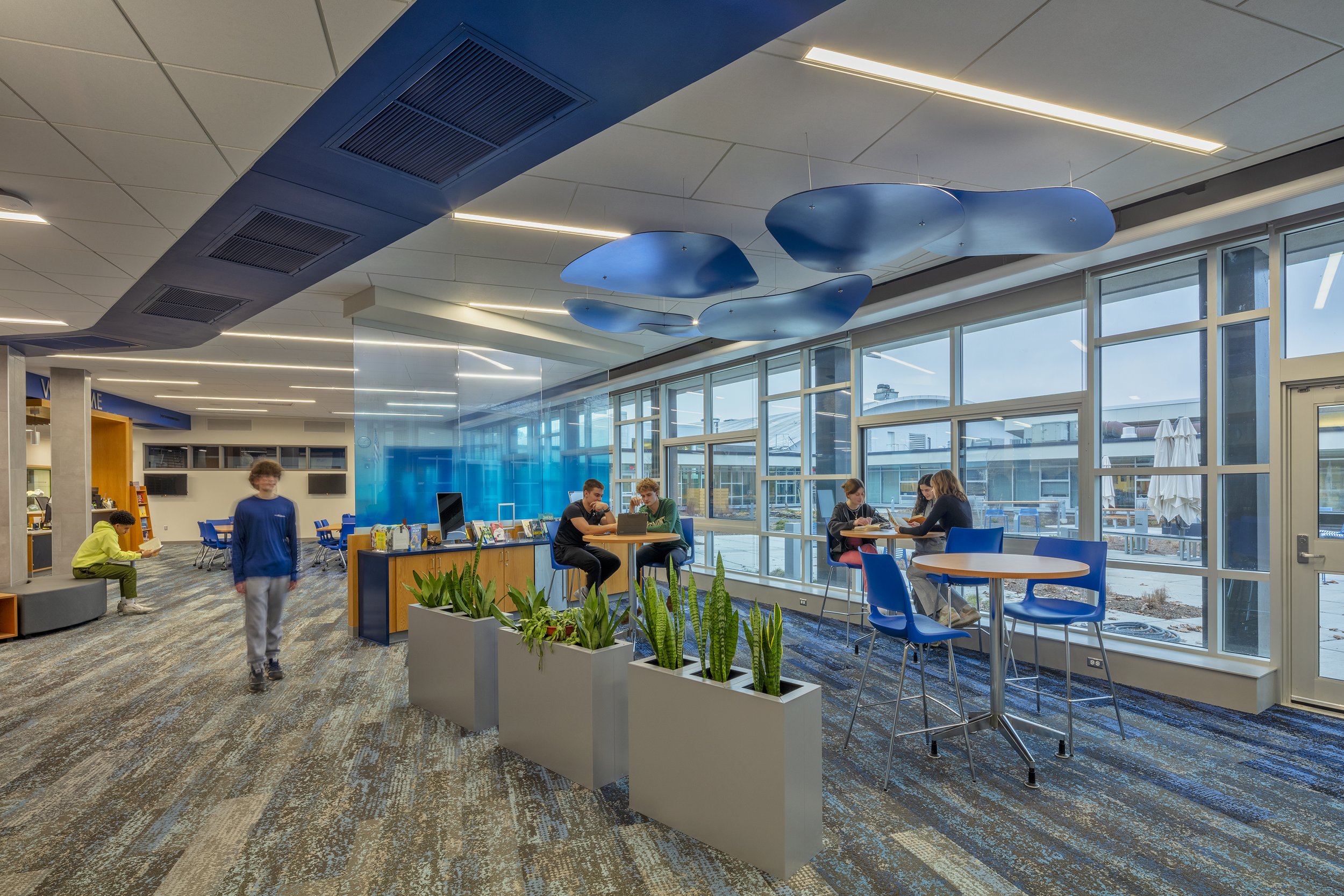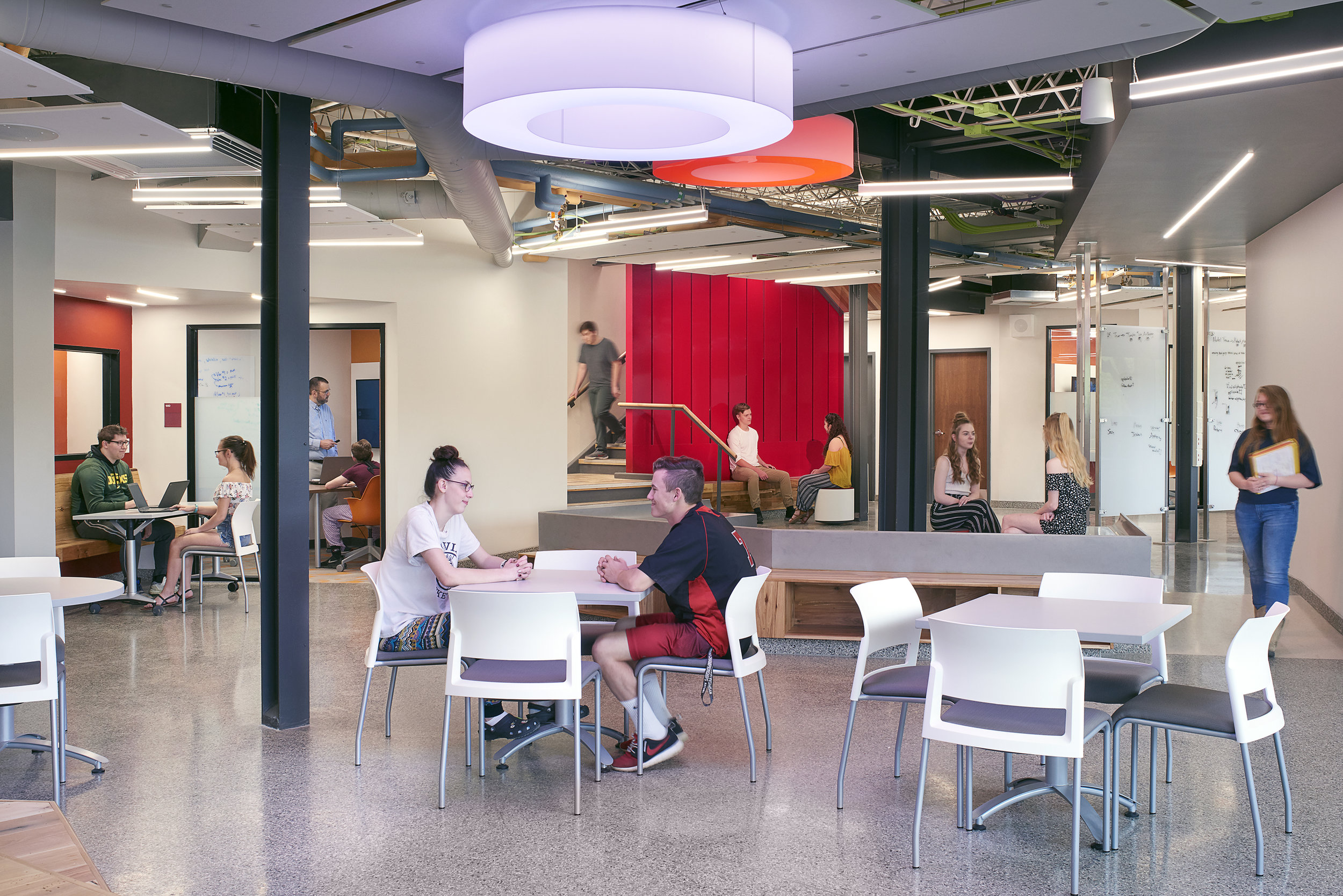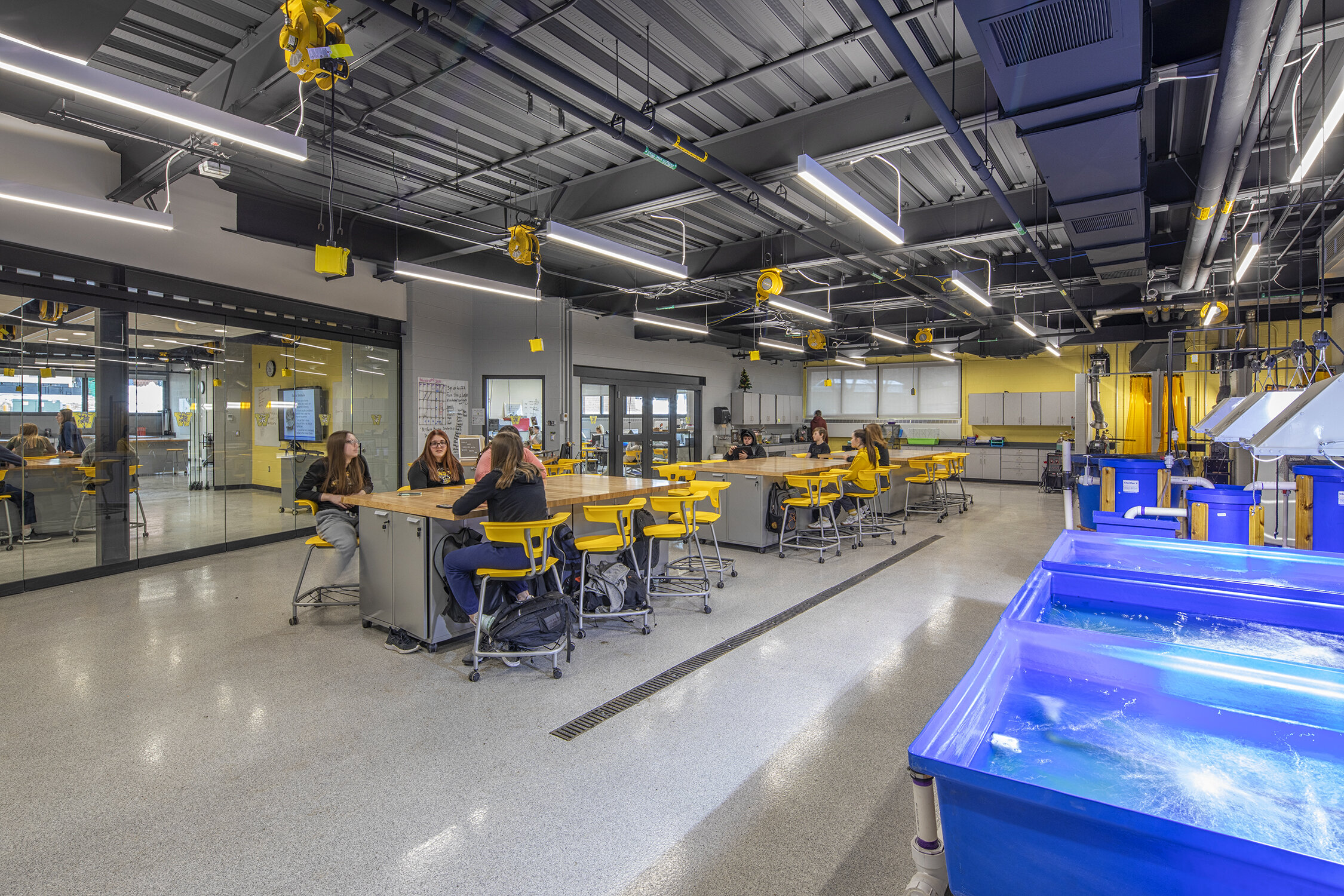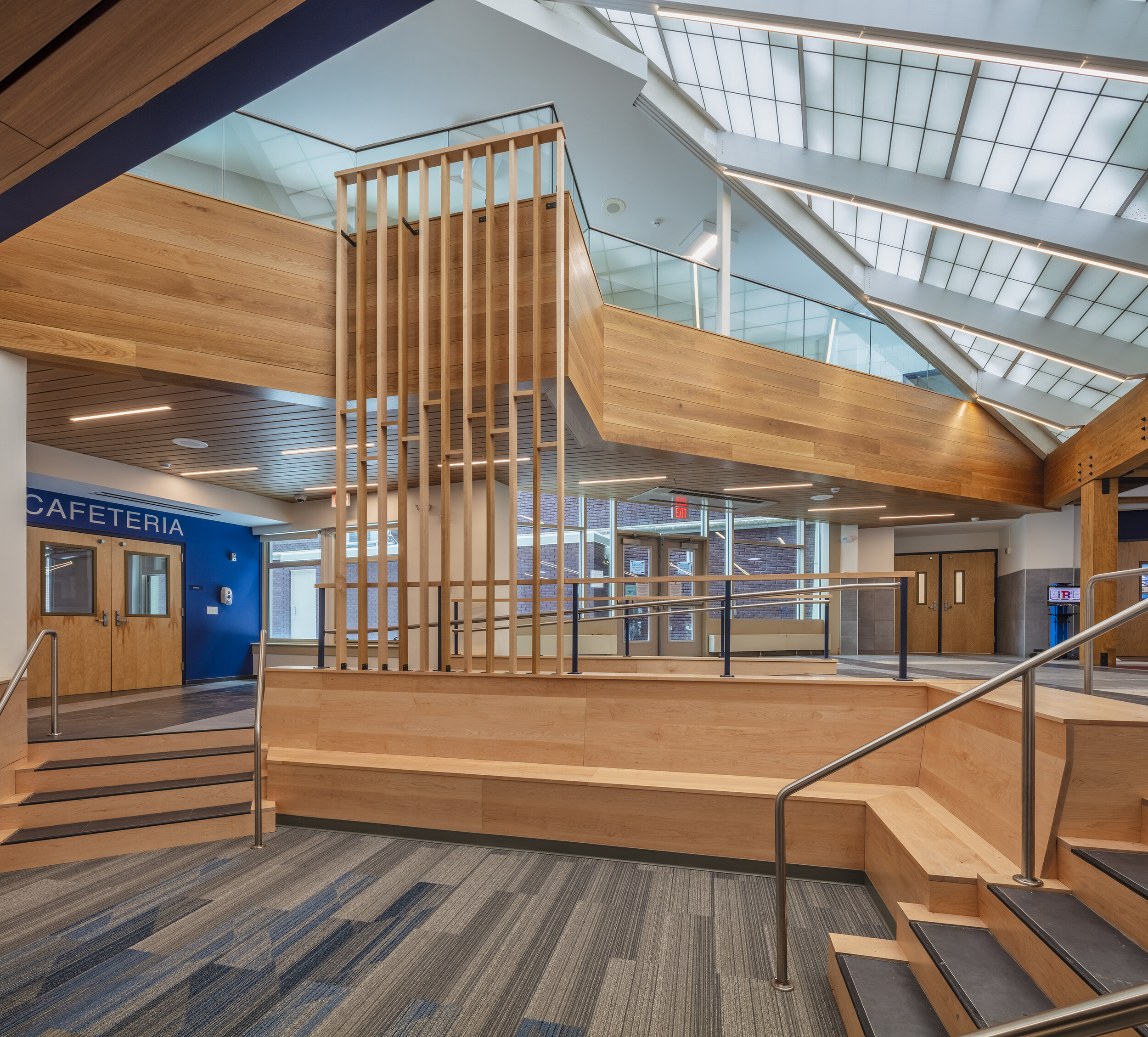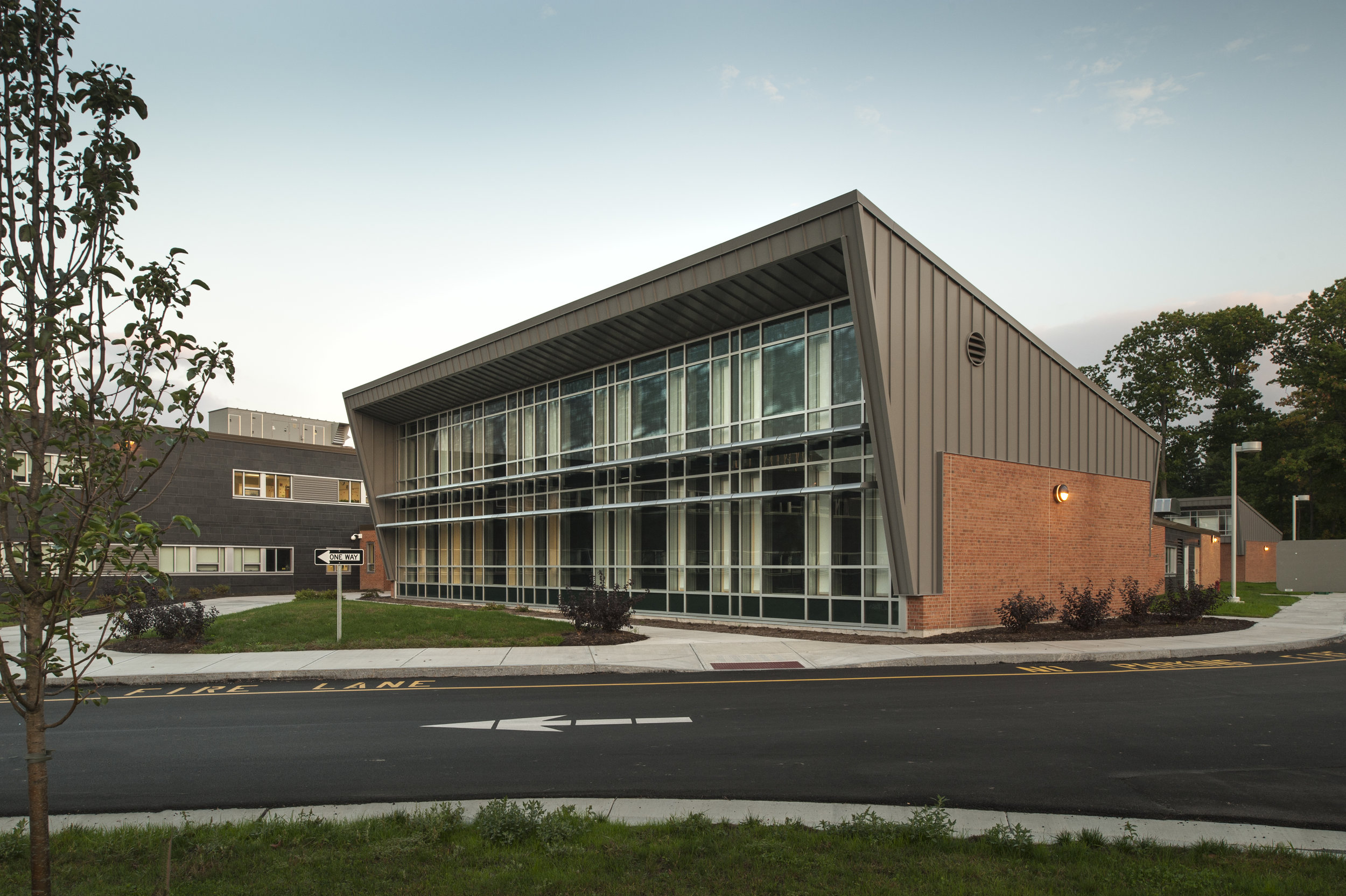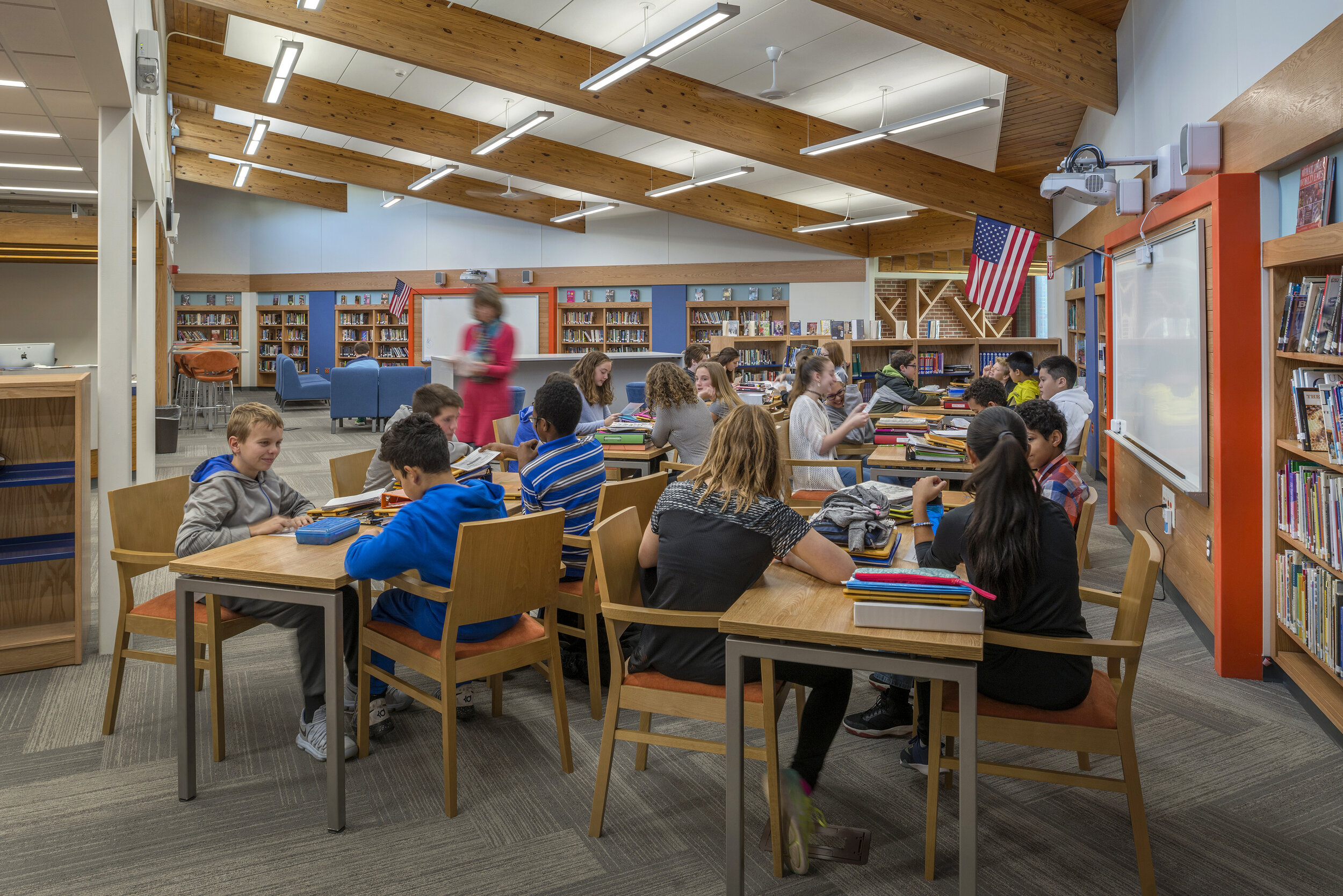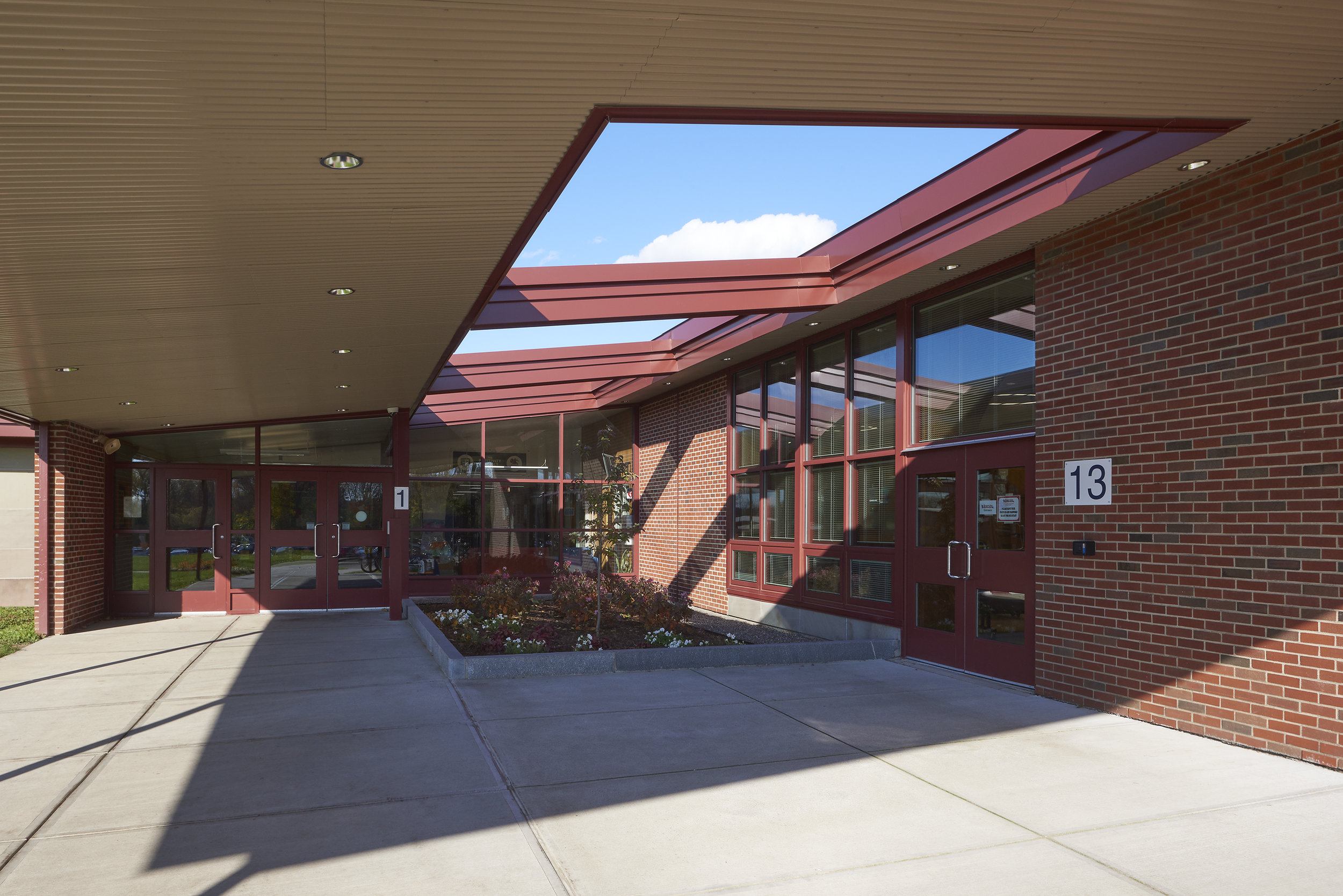ELEMENTARY STEAM WING.
Groton Central School District
The District leadership had a bold vision: to create an inspiring STEAM wing for their elementary school that would complement the new STEAM wing at the high school. They saw an opportunity to transform three classrooms and a portion of a large storage room into an open, collaborative space that would foster hands-on learning and student-driven discovery. The design team was challenged to create a space that would encourage students to learn through experimentation and exploration, rather than traditional lectures. The assumption was that students would rarely be seated at tables, instead choosing to work on the floor, using their senses and hands to gain knowledge through direct experience.
Flexibility was key. Unlike a typical classroom, storage was minimized and there would be no fixed teaching wall. Every surface was to be a potential learning surface. The space needed to be adaptable, inspiring, and feature an open floor plan that could be configured in different ways. It would be divided into four major learning zones, but these zones could be combined or separated as needed.
The goal was to maintain an open feel, while still creating a sense of definition and visual interest. The solution was to use the static elements as “anchors,” and connect them with playful, angled “arches” in different colors. These arches would help to loosely divide the space, encourage interaction, and allow mounted items to be viewed from new angles.
The space features a variety of interactive elements. Existing terrariums and aquariums would be incorporated, along with overhead services like compressed air and water. Large sinks and “active walls” with materials like custom pegboard, magnetic surfaces, whiteboards, and tackboards would provide opportunities for experimentation. Pneumatic tubes would allow students to transfer objects across the room, adding an element of fun and surprise. Markerboards that could fold away would help to create zones as needed. The result is a unique, inspiring space that supports the district’s vision for hands-on, student-driven STEM education. It is a place where students can explore, discover, and learn through direct experience, and where the boundaries of a traditional classroom are stretched and redefined.
Photography: David Lamb Photography









